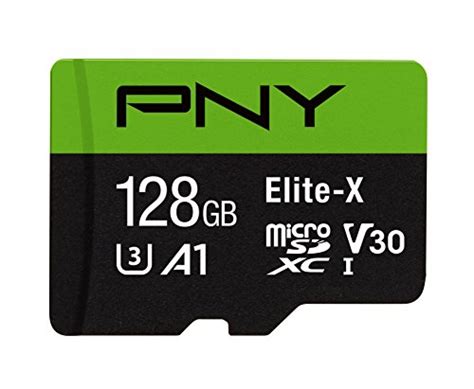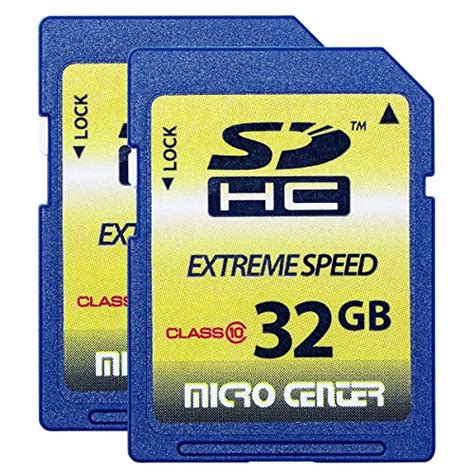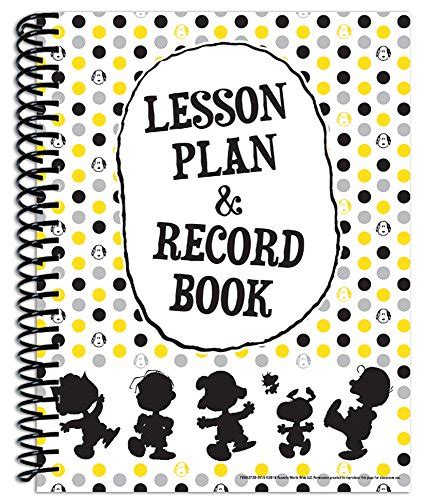
Online Course Report
Independent Online Course Rankings
Game design has exploded in growth in recent years. That’s good news for someone like you wanting to learn more about this field.
Game development requires a lot of knowledge about design. That’s because game development is truly an art form. You have to understand how to generate concepts and design the game from start to finish.
You also have to be able to work as part of a team. Game development requires many different types of workers. Game developers work with actors, sound engineers, programmers, and many other specialty workers to create a game.
Featured Programs
Disclaimer: Some courses may include an affiliate link. Courses were chosen first based on the methodology with affiliate links only added after the ranking was complete.
There are hundreds of online game development courses. Many of them are game development courses for beginners. So, even if you have no experience, you can learn game development and make a career out of something you love to do.
Game development courses can be easy, difficult or somewhere in between. They can be long or short. Some are free while others require payment. The types of game design courses are about as varied as the types of games!
To help you narrow down which online game development courses are the best fit, we developed a three-step methodology. We use each of the following criteria to create an overall score for each online game design course in our rankings:
When looking for game development courses, these criteria are very important. Saving money is key for most learners, but so too is having the flexibility to learn when your schedule allows it. Taking courses that are a good fit for your learning level is critical as well.
Each of these three factors is explained in more detail in the next section.
Rather than rely on a single factor to create our rankings, we use three different factors to come up with a final score.
The primary factor is cost. We prioritize affordability because most learners are most concerned about the expense of gaining new skills. Of course, the cost to learn game development isn’t the only thing you should consider.
We feel that the flexibility of a course is an important thing to think about as well. After all, if the class doesn’t adjust to fit your schedule, there’s not much point in taking the class!
You also need to consider the learning level of a course. If you’re just starting out, taking game development courses for beginners makes the most sense. Taking an advanced course when you already have game design skills is a sensible option as well.
Let’s review each of these factors in greater depth.
Game development courses come at all levels of affordability. Some courses are completely free. Other courses offer a free trial. Yet other online game development courses require you to pay a fee. The amount of the fee varies from one paid course to the next.
But since cost is such an important factor for most students, we’ve prioritized its importance in our methodology. That is, the affordability of a course is weighted more than the other two factors.
Here’s how we assign points for affordability:
Clearly, free courses get more points than more expensive paid courses. This isn’t a reflection of the quality of paid courses. There are tons of excellent paid courses that will help you learn game development.
However, for our purposes, we rank free and low-cost courses higher because of their potential to offer more for your money.
As mentioned earlier, you need to consider the flexibility of the learning experience.
For example, can you learn at your own pace? How long do you have to complete the course? Another thing to ask is are course materials available offline? Also, can you access the course on your phone and other devices?
These are just a few questions to think about as you decide whether a course offers the right flexibility.
The flexibility of a course is scored as follows.:
These points are assigned based on the number of flexible traits the course has.
If a course has three or more features that improve its flexibility, it gets the most points. Courses with two features that improve flexibility are rated as moderately flexible. Courses that lack much flexibility are scored “low.”
The learning level of online game development courses is the final part of our ranking system.
Most of the game development courses online are for beginners. This is great if you’re a beginner learner. You need to do introductory courses first before moving on to more complex studies.
But it’s just as important that intermediate and advanced learners find appropriate courses. Unless you need to brush up on something you learned a while ago, you need to focus on higher-level courses if you’re at the intermediate or advanced level.
Here’s how we assign points for learning level:
Some online game development courses are mixed level. This means they start out with beginner lessons and progress to advanced lessons. In these cases, the courses are scored as intermediate level.
This is not just a single course. Instead, it’s a certificate program from the University of California at San Diego and edX.
There are three separate classes in this certificate program. This includes:
This course equips you with knowledge of key development tools. You’ll use Unity 3d. You’ll also become familiar with OpenGL. There are many hardware components that you’ll use as well.
By the end of this game design course, you’ll have the skills to create your own VR app. You’ll also be able to use your app to develop augmented reality apps.
This is an intense course. It takes about five months to complete if you work 5-9 hours per day.
Visit the course website.
Points: 4
Affordability: $267.30 (at the time of writing)
Flexibility: Highly flexible. You can learn at your own pace. Expert instructors work with you throughout the course to give you feedback. The course is fully online so you can study anywhere with an internet connection.
Learning Level: Beginner
This short beginner course only takes about 30 minutes to complete. But Udemy has packed it with valuable information.
The focus is on Swift. More specifically, you’ll learn how to use XCode labels in Swift.
Course lessons include:
This course is project-based. Instead of sitting through lectures, you’ll be working interactively. By the end of the course, you’ll have actual real-world apps that you can use in your portfolio.
There are two requirements for this online game design course. First, you must have XCode. Second, you have to have a Mac.
If you’re looking for a very quick course that introduces you to coding, this is it!
Visit the course website.
Points: 5
Affordability: $49.99 (at the time of writing)
Flexibility: Highly flexible. This course has a self-paced learning option. There are also graded assignments and peer feedback to enhance your learning. You can use course videos, quizzes, and readings to help you solidify your learning as well.
Learning Level: Intermediate
This game design and development specialization is a collection of courses from Michigan State University and Coursera. There are five classes total. It will take about six months to complete each class.
You will learn everything from game design theory to video game production. You’ll explore prototyping, idea development, and testing. Additionally, you’ll explore:
This course includes many hands-on activities. This includes a capstone project that you will work on with Kongregate, an online gaming portal. In fact, each class within the course includes hands-on projects.
At the end of the online course in game design, you will earn a certificate that you can add to your resume or curriculum vitae. To earn the certificate, you must successfully finish each class and each project.
Visit the course website.
Points: 5
Affordability: Free to enroll. A fee (usually around $50) might be required. Other costs are involved if you participate in a specialization (usually $39-$79 per month). Learn more about Coursera pricing. This is scored as a paid course.
Flexibility: Highly flexible. This course has a self-paced learning option. There are also graded assignments and peer feedback to enhance your learning. You can use course videos, quizzes, and readings to help you solidify your learning as well.
Learning Level: Intermediate
This beginner specialization from Coursera and the University of California, Irvine is designed with new developers in mind.
There are a total of six classes in this online game design course. Each one explores a different topic in iOS development:
The sixth class is a project-based course. In it, you build your own networked game.
By the end of the specialization, you’ll have the skills needed to create your own app. You’ll also have extensive skills in tools like UIKit, SpriteKit, networking, and more.
Visit the course website.
Points: 5
Affordability: Free to enroll. A fee (usually around $50) might be required. Other costs are involved if you participate in a specialization (usually $39-$79 per month). Learn more about Coursera pricing. This is scored as a paid course.
Flexibility: Highly flexible. You have the option to work at your own pace. The specialization includes many videos, readings, and other resources to help you learn. You can also set deadlines and change them according to your needs.
Learning Level: Intermediate
If you have some experience with JavaScript, this course from Udemy will help you create basic games with the addition of a few more skills.
This beginner course offers a great introduction to game design. The skill you gain in this class will help form a solid foundation of understanding for studying more advanced topics and creating more complex games in the future.
You can expect to learn about:
You’ll also study a unit on HTML canvas elements. Each of these skills will play an important part in building a simple JavaScript game.
This online game design course is built step-by-step, beginning with introductory concepts and working slowly into more advanced concepts.
It’s also a short course – just 1.5 hours in length. This enables you to quickly gain some game design skills.
Visit the course website.
Points: 7
Affordability: $13.99 (at the time of writing)
Flexibility: Highly flexible. This course is very short and easy to finish in a single sitting. It’s also available for life, so you can come back to it and brush up on skills. There are multiple downloadable resources as well.
Learning Level: Beginner
The focus of this course from Udemy is on designing games for Android. Specifically, you’ll learn how to build games using Unity.
Unity allows you to create two-dimensional and three-dimensional games. In this online game design class, you’ll learn how to create a simple game in less than an hour.
Additional learning topics include:
You also look at creating systems where users can unlock features based on their gameplay achievements.
Something of interest is that this game development course includes a unit on how to earn money with video ads. That makes this class something you can use directly to potentially start earning money.
Visit the course website.
Points: 7
Affordability: $13.99 (at the time of writing)
Flexibility: Highly flexible. This course includes downloadable articles and on-demand video. You also get full lifetime access. You can access the course on TV or mobile as well.
Learning Level: Beginner
Why do some games become successful? Why are some games so addictive? The answer lies in psychology. In this course by Udemy, you’ll learn how to use psychological principles to develop fun and engaging games.
This course was created for designers that want to make their game the next big hit. You don’t need to know anything about psychology – you’ll learn it all here.
Topics of study include:
Additionally, you’ll have the chance to learn how to use graphics and music to create a more engaging gameplay environment.
This game design course includes 22 lectures and more than two hours of on-demand video. Each lesson includes a chapter summary to help you remember what you’ve just learned.
Visit the course website.
Points: 7
Affordability: $13.99 (at the time of writing)
Flexibility: Highly flexible. There are ten downloadable resources. You also get lifetime access to the course. The class is available on mobile devices and TV too.
Learning Level: Beginner
This intermediate course from Udemy is designed to help you create engaging characters for your games. You will do so using Blender 2.8.
In addition to learning how to 3D model, this course teaches you UV mapping. There is also a lesson on how to texture and sculpt characters to bring them to life.
This hands-on course takes you step-by-step through character creation. You’ll build individual pieces of a Lego character. Then you’ll learn how to UV map the character.
Other units of study include:
This online course in game design also uses Unity. You’ll use Unity to create a C# script. This script is what will control the character in the game.
Since this is an intermediate course, you should have some experience with Blender. You should be familiar with Unity too.
Visit the course website.
Points: 8
Affordability: $14.99 (at the time of writing)
Flexibility: Highly flexible. There are nine hours of on-demand video and six downloadable resources. You can work at your own pace. Buying the course gets you lifetime access.
Learning Level: Intermediate
If you’re looking for a complete course to take you from a beginner to advanced game designer, this is it.
This Udemy course includes instruction on everything from coding to game design. You’ll work through lessons that include topics on:
Likewise, you’ll explore how to develop games for different platforms, including PlayStation, Xbox, and Nintendo.
Maya, Mudbox, and 3DS MAX are further topics you’ll learn about in this comprehensive course.
With 86.5 hours of on-demand video, this is a very long class. But you can work at your own pace so you’re sure you get the most out of the game design course.
Visit the course website.
Points: 8
Affordability: $13.99 (at the time of writing)
Flexibility: Highly flexible. There are more than a dozen downloadable resources. You can use ten articles to help you learn too. There are also nearly 90 hours of on-demand video that you can access for life.
Learning Level: Intermediate
This beginner game development course from Alison focuses on the planning phase of game design.
You’ll learn how to develop a solid plan for creating a game. As part of that, you’ll discover the professional standard documentation that you need for the games you develop.
Also in this class, you’ll learn:
There are three modules with eight lessons, so this is a short class. This course ends with an assessment that tests you on the knowledge you’ve gained. There is also a certification available.
Since this is a beginner course, you don’t need to fulfill any prerequisites. Once you enroll, you can start right away!
Visit the course website.
Points: 9
Affordability: Free
Flexibility: Highly flexible. The course is immediately available online upon enrollment. Work at your own pace through the course materials. The course is available on mobile devices as well.
Learning Level: Beginner
This beginner course from Michigan State University and Coursera introduces you to fundamental topics in game development. You’ll be introduced to C# programming. You’ll also learn about the Unity user interface.
Since this is a beginner course for game development, you don’t need to meet any prerequisites to take the class. Instead, you can immediately begin to learn about:
As part of the requirements for this course, you will complete three hands-on projects. These projects help you apply what you’ve learned in the lectures.
This course is designed to help students discover what career path they might want to take. It’s a good introduction for game designers, artists, and programmers alike.
There are four modules in this course. Most students can finish the class in about 19 hours.
Visit the course website.
Points: 9
Affordability: Free to enroll. A fee (usually around $50) might be required. Other costs are involved if you participate in a specialization (usually $39-$79 per month). Learn more about Coursera pricing. This is scored as a free course.
Flexibility: Highly flexible. This course allows you to work at your own pace. Work can begin as soon as you enroll. As your schedule changes, you can adjust the course due dates.
Learning Level: Beginner
This is an introductory course from CalArts and Coursera. The focus of this top class is on the very basic concepts of gaming and game design.
You’ll begin by learning how gamers interact with games. You’ll define what constitutes a game. You’ll also learn the rules of making different types of games.
Additional learning topics include:
Since this is a beginner course, you don’t need any game design experience. You also don’t need coding or programming experience.
There are four units of study. It takes most students about 10 hours of total work time to complete the course.
Visit the course website.
Points: 9
Affordability: Free to enroll. A fee (usually around $50) might be required. Other costs are involved if you participate in a specialization (usually $39-$79 per month). Learn more about Coursera pricing. This is scored as a free course.
Flexibility: Highly flexible. You can work at your own pace. Work can begin immediately upon enrollment. You can set and reset deadlines as needed.
Learning Level: Beginner
This intermediate course from the University of Colorado-Boulder and Coursera focuses on C# programming for game development. There is also a strong focus on the Unity game engine.
Using either Windows or Mac, you will explore why these two programs are top choices among game developers. Since this is an intermediate class, you’ll need to have a good working knowledge of C# and Unity.
Topics you can expect to study in this online game design class include:
This class ends with a final project that’s peer-reviewed. This project gives you a chance to put your learning to the test. You also get valuable feedback on your work from your classmates.
This top class is part two of five in a Coursera specialization on C# Programming for Unity Game Development. You don’t have to take the entire specialization. However, it could be valuable for you if you wish to develop Unity games in the future.
Visit the course website.
Points: 10
Affordability: Free to enroll. A fee (usually around $50) might be required. Other costs are involved if you participate in a specialization (usually $39-$79 per month). Learn more about Coursera pricing. This is scored as a free course.
Flexibility: Highly flexible. This course is 100 percent online. You can set deadlines according to your schedule. You can work at your own pace to complete the course.
Learning Level: Intermediate
This intermediate course from Harvard and edX takes you on a journey of learning about 2D and 3D games. To study game design, you’ll examine popular games like Angry Birds, Pokemon, and Super Mario Bros.
This free online game design class isn’t just a review of popular games. Instead, you’ll explore topics specific to:
Additionally, there is a hands-on portion of this class. You will get to program multiple games of your own based on the skills you learn in this course.
This is a lengthy course and takes about 12 weeks to finish if you work about six to nine hours each week. It’s self-paced, though, so you can finish the course faster or slower if needed.
Visit the course website.
Points: 10
Affordability: Free
Flexibility: Highly flexible. You can work at your own pace. All course materials are easily available online. Video transcripts are available to help you quickly review the lecture material.
Learning Level: Intermediate
This advanced course was designed by Unity and is offered by Coursera. Its focus is on preparing you for Unity’s Expert Gameplay Programmer Certification Exam.
In this best class for game design, you’ll touch on many topics, including:
There is also a lesson on conflicts and solutions during the prototype phase. In this lesson, you’ll learn why prototyping is such a crucial part of game design. You’ll explore how to analyze gameplay and adjust the game as needed to create an even better final product.
As a result of your work in this top class for game design, you’ll have a functioning prototype game that is fully playable. You can expand on it as you learn further skills in game design.
This is the first of a series of courses in a specialization in Unity’s Gameplay Prototyping Specialization. You don’t have to take the other courses. However, it might be worth looking at if you want to develop your prototyping skills even further.
Visit the course website.
Points: 11
Affordability: Free to enroll. A fee (usually around $50) might be required. Other costs are involved if you participate in a specialization (usually $39-$79 per month). Learn more about Coursera pricing. This is scored as a free course.
Flexibility: Highly flexible. Once you enroll, the course is open for study. You can take as much time as you need to finish the class. If your schedule changes, you can adjust the deadlines as you see fit.
Learning Level: Advanced
What’s the difference between game design and game development?
The major difference between a game designer and a game developer is simple. A game designer creates the layout of the game. A game developer makes those designs into actionable features.
For example, a game designer might focus on creating a specific character. They’ll work on the character’s facial features. They’ll design the character’s clothing. They’ll develop the character’s personality.
Once the design stage is done, a developer puts those designs into action by developing code. The code makes the designer’s creations come to life.
So, these jobs have different tasks. However, game designers and game developers work closely together to make the game come to life.
There are other differences in these jobs.
Most game designers have a lot of knowledge about artistic concepts. They should have strong visual skills. They should be able to draw and sketch. Being able to 3D model their creations is important too.
In many cases, game designers also need to know coding languages. This is helpful so they can better understand how game developers take their designs and bring them to life.
On the other hand, game developers focus a lot on coding and programming. Typically, they review the design plans of the game with the game designer. This is done so they know exactly what the designer’s vision is. This is also done so developers can start to devise a plan for how they will code the game.
Do I have to go to college to be a game designer?
No, not every job in this field requires formal education. Some game designer jobs have requirements. For example, some employers place a lot of importance on the level of education of their employees. So, Employer A might want their game designers to have at least a bachelor’s degree.
However, Employer B might not have the same rules. Some companies don’t care what your level of education is. What they care about is whether you have the knowledge, skills, and experience to get the job done. This means some game designer jobs only require you to have a high school diploma or GED.
Having said that, very few employers will hire someone without a degree that also doesn’t have any game design experience. It’s important that if you don’t get a formal education that you find ways to develop relevant skills. Taking courses like those in the rankings above is a good place to start.
It’s also recommended that you try to find ways to get experience as a game designer. Some of the courses in our rankings are project-based, so you can use the games you create in those courses in your portfolio of work.
As another idea, you might seek out internships with game designers so you can get some on-the-job training. Even doing a short job shadowing experience where you spend a few days at work with a game designer can help you gain important skills that potential employers like.
What are some majors for game design?
Some people think that you have to major in computer science to be a game designer. This isn’t exactly the case.
As explained in the previous question and answer, you don’t have to go to college at all to be a game designer. But if you want an education, or if the company you want to work for places a lot of priority on employees having degrees, there are many different options for you.
For the most part, a bachelor’s degree is all you need. A bachelor’s degree usually takes four years to complete if you attend school full-time. If you take extra classes here and there or attend school in the summers, you could finish your degree in three years or less. Alternatively, if you go to school part-time, it could take five years or more to finish your studies.
The question is, what bachelor’s degree should you get? There are many excellent options outlined briefly below.
Computer Science – A bachelor’s degree in computer science is an attractive option because it’s so broad. That is, you don’t just gain game design skills. Instead, these programs will help you develop many other design and development skills that make you highly marketable to potential employers. This is a good way to go if you’re not sure if game design is for you. Additionally, because you learn so many skills, if you can’t find a game design job after graduating, chances are you can find a similar job because of this degree.
Graphic Design – A bachelor’s degree in graphic design is a great option for future game designers. Most graphic design programs have courses in computer graphics, typography, and animation, all of which are necessary for game design. But, just like computer science, graphic design is far broader. You will graduate with the skills needed to design all manner of things, from websites to brochures to business cards.
Interactive Entertainment – A bachelor’s degree in this field incorporates studies of many different types of game design. So, instead of learning how to create online games, you also learn how to design games for smartphones and gaming consoles. Usually, these degree programs have a solid computer science foundation. This is good in case you need those skills to pursue other careers.
Game Design and Development – A bachelor’s degree in game design and development is much more focused than one in computer science. Your courses will mostly be in artistic design and computer development. But this doesn’t mean you won’t graduate with other skills. These programs usually have a strong computer science core. This gives you the ability to find other jobs if your dream design job isn’t immediately available.
Game Design – A bachelor’s degree in game design is even more of a niche degree than one in game design and development. These degrees were created with the understanding that designers and developers work together to bring a game to life. As such, this degree focuses on the design part of the equation. You might take courses in drawing and animation. Usually, 3D modeling courses are required too. What you won’t take are coding and programming courses. This type of degree is somewhat of a risk. That’s because you’re relying on finding a design-specific job after you graduate. This degree doesn’t give you any lateral skills that apply to other jobs.
Do I need a game design certification?
A certification in game design is not necessary to get a job. Some employers might require a certification (or a degree, as discussed above). But by and large, a certification remains an option for most jobs.
This isn’t to say that you shouldn’t be certified. Having a certification can greatly expand your employability.
For example, if your bachelor’s degree is in graphic design, getting a game design certificate can help you beef up your design skills as they specifically pertain to gaming. As another example, if you don’t have a degree at all, having a certification might help put a potential employer’s fears to rest about your level of knowledge and skills of game design.
Another reason why you might consider getting a game design certification is that you can build additional professional skills.
For example, let’s say you’re a junior game designer. If you want to advance up the career ladder, you might need to acquire new skills, like mastering animation. With a certification in animation, you can show employers that you’re committed to learning and that you’ve developed new skills.
Some of the courses in our rankings offer certifications. In some cases, they’re simple completion certificates. This kind of certificate can be used in your resume to highlight the game design skills that you’ve acquired.
Other courses in our rankings offer professional certifications. To get a professional certification, you must do far more than just complete a course. Usually, you have to complete multiple courses. You also often have to pass an examination. As a result, this type of certification is viewed more favorably by employers.
How long does it take to become a game designer?
The answer to this question is, it depends.
Let’s say you’re getting a bachelor’s degree in computer science. As noted above, if you go to school full-time, it will take you about four years to finish. But if you go to school part-time, it might take you five or six years to finish your degree and get a job in game design.
But not everyone goes to college.
Now let’s say that you have always been interested in game design and that you have taken courses like the ones listed in our rankings. You’ve spent several years learning new skills on the side. You might even have a certification or two in game design topics.
With a few years of informal education and some experience under your belt, you might be able to find an entry-level job in game design. In this scenario, it might take you 2-3 years to get your first job.
But there are always exceptions to the rule. Not everyone with a degree gets a job immediately. And not everyone that is self-taught can develop the skills needed to get a job in just 2-3 years.
On the other hand, some particularly gifted game designers land their first job within a year or two of learning how to design. So it really just depends on your specific situation how long it will be before you start making money as a designer.
Are game designers in top demand?
Game design is definitely a growing field. The question is how quickly it will grow.
According to the Bureau of Labor Statistics (BLS), multimedia artists and animators should see about a four percent increase in job prospects through 2028. This isn’t very fast growth.
However, these statistics aren’t specifically for game designers. Instead, multimedia artists are a very broad category that includes graphic designers, cartoonists, game developers, and so on.
But, as the BLS report points out, consumers have shown a desire for more realistic games. This means that companies have to design and develop more complex games to meet demand. As this trend continues, there might be an increase in the number of game designer jobs.
GameDesigning.org points out that the video game industry is one of the few that has weathered the current recession well. Since games provide an escape for people, and because gaming is more popular than ever, it’s safe to assume that game designers will be in higher demand as the years go by.
Another reason to think that game design will be a growing field is that technology is constantly changing. The tools and techniques designers use in 2020 are in some cases far different from those used in 2010. And the same will be true in 2030!
As gaming becomes more sophisticated, and as the way games are designed and created evolves, top-quality game designers will be more and more in demand.
How much money do game designers make?
The salary you earn as a game designer depends on many different factors.
For starters, if you’re a lead game designer, you’ll make more money than a normal game designer. That’s because the lead designer takes a supervisory role in the process. With added responsibility comes added income.
So, a game designer might make around $66,000 per year with 4-6 years of experience. However, a lead game designer might make around $86,000 with the same level of experience.
In addition to the job title, your level of experience will influence your income. Using the example from above, a game designer with 4-6 years of experience will certainly make more money than a game designer that’s been on the job less than a year. In fact, with less than a year of experience, a game designer can expect to make about $60,000 each year.
Where you live is also a factor in your income. For example, a game designer in Alaska can expect to earn nearly $90,000 per year. But a game designer with a similar level of skill and experience in Michigan can expect to earn less than $78,000 per year.
OCR Staff
June 2020
More Rankings of Interest:
 Four Paws Wee Wee Pee Pads For Dogs And Puppies Training L Gigantic Xl St
Four Paws Wee Wee Pee Pads For Dogs And Puppies Training L Gigantic Xl St
 Pny 128gb Elite X Class 10 U3 V30 Microsdxc Flash Memory Card 100mbs
Pny 128gb Elite X Class 10 U3 V30 Microsdxc Flash Memory Card 100mbs
 Academy Of Beasts V Shifter Romance
Academy Of Beasts V Shifter Romance
 Beast Academy 5a Practice
Beast Academy 5a Practice
 32gb Class 10 Sdhc Flash Memory Card Standard Full Size Sd Card Ush I U
32gb Class 10 Sdhc Flash Memory Card Standard Full Size Sd Card Ush I U
 Go Power F 200 Class T 200 Amp Slow Blow Fuse Silver
Go Power F 200 Class T 200 Amp Slow Blow Fuse Silver
 Blue Sea Systems 5116 Fuse A3tclass T 200a
Blue Sea Systems 5116 Fuse A3tclass T 200a
 Eureka Peanuts Classic Characters Deco Kit 840227
Eureka Peanuts Classic Characters Deco Kit 840227
 Eureka Peanuts Geometric Back To School Classroom Supplies Record And Less
Eureka Peanuts Geometric Back To School Classroom Supplies Record And Less
 Marathon Revised And Updated 5th Edition The Ultimate Training Guide Advice
Marathon Revised And Updated 5th Edition The Ultimate Training Guide Advice
 La Bella 413p Studio Classical Guitar Strings
La Bella 413p Studio Classical Guitar Strings
 12 Easy Classical Masterpieces For Solo Guitar Complete Classical Guitar Arran
12 Easy Classical Masterpieces For Solo Guitar Complete Classical Guitar Arran














